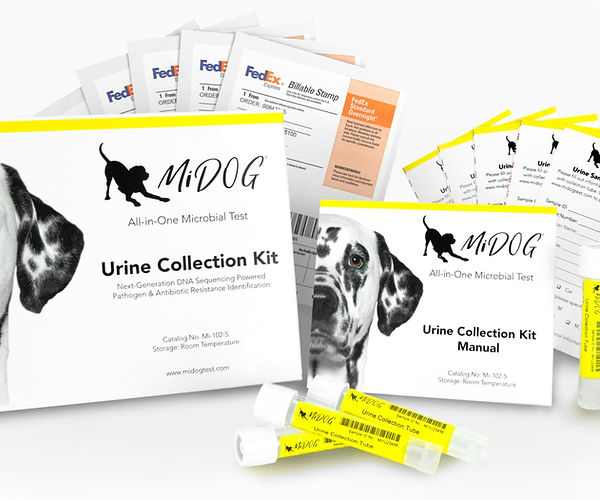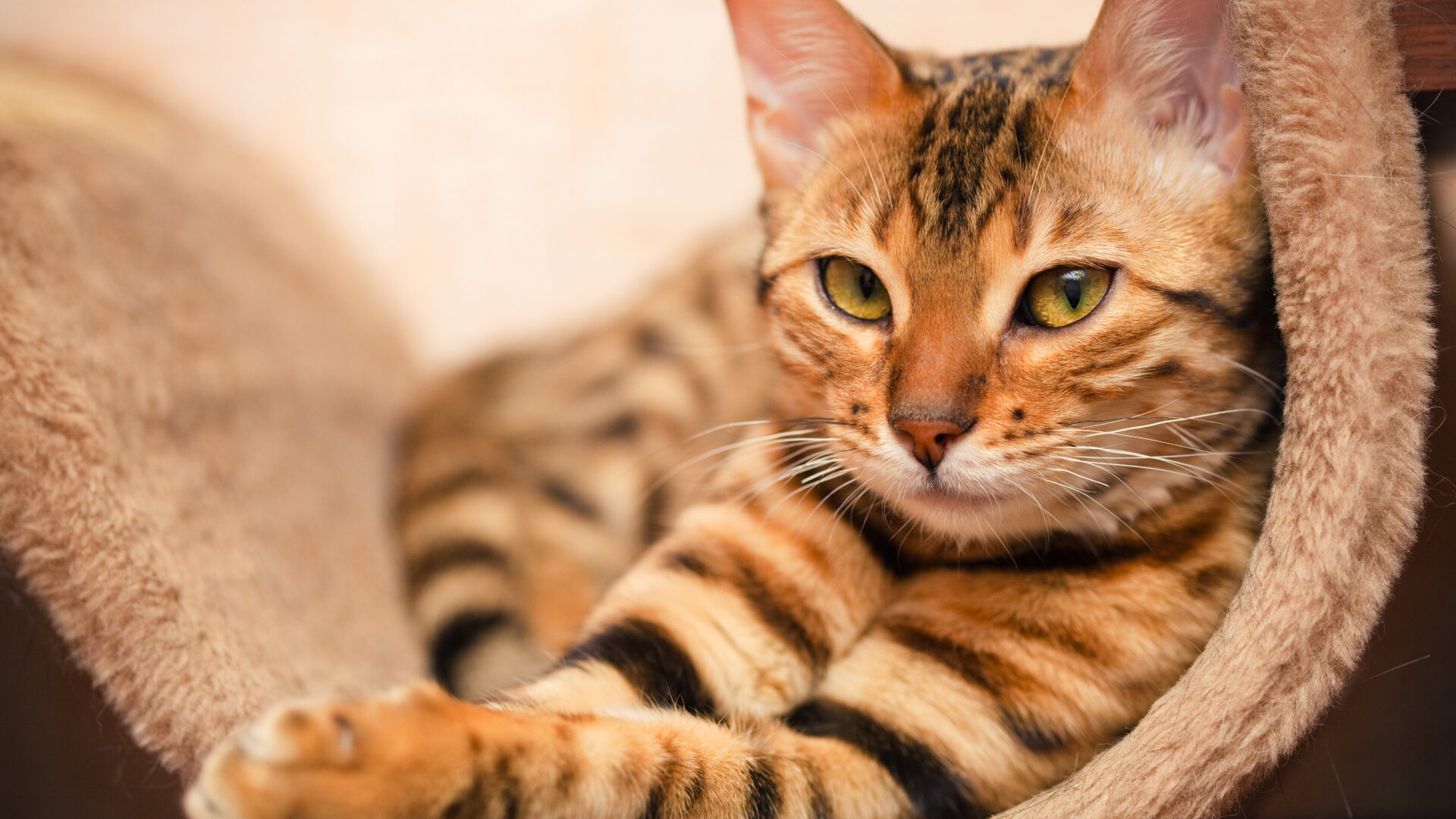
MiDOG technology can help diagnose your cat’s urinary tract infection.
Has your cat been struggling in the litter box? Or maybe you’ve noticed that despite being potty trained for years, your cat has recently started to lose control. These behaviors may seem more puzzling than concerning but could be indicative of a painful and dangerous urinary tract infection.
What is a Urinary Tract Infection?
You might not realize it, but there are actually a lot of bacteria that inhabit the urinary system and are considered part of a normal or healthy urinary bacterial community. Urinary tract infections (UTIs) occur when pathogenic (disease-causing) bacteria are able to out-grow other harmless bacteria and wreak havoc within your cat’s urogenital system.
One study reports that only about 1.5% of cats develop UTIs in their lifetime, but it is important to understand the dangers such an infection may pose [1]. While most urinary tract infections cause a significant amount of pain and discomfort, some cats (especially male cats) may experience complete blockages of the urogenital tract. Such a blockage can be life-threatening if not treated by a veterinarian within 24-48 hours. For this reason, responsible owners should be on the lookout for signs and symptoms of a potential UTI in their cats to prevent a worst-case scenario.

The graphic above depicts the transition from a health-state to disease-state urinary tract infection in felines (adapted from Dorsch et al., 2019).
Symptoms of Urinary Tract Infection in Cats
While feline UTI severity exists on a spectrum, the following UTI symptoms indicate that your cat may be suffering and needs to visit a veterinarian:
- Increase in frequency of urination
- Strain in urination
- Urinating small amounts
- Urinating outside of the litterbox
- Bloody urine
- Frequent licking of genitals
- Crying out in pain when urinating
In addition to cats exhibiting UTI symptoms, it is important to note that many cats have asymptomatic (or subclinical) UTIs. Occurring in approximately 1-29% of cats, subclinical UTIs are more common than symptomatic UTIs, with culture-based tests similarly indicating a significant number of opportunistic pathogens [2]. However, characteristic symptoms for subclinical UTIs may be too subtle or even absent to qualify for a UTI diagnosis [3].
Risk Factors for UTIs in Cats

A large case-controlled study found Abyssinian cats have a significantly greater risk of UTIs than other cats [4].
Predisposing factors for UTIs vary between different countries due to geography, season, diet, and lifestyle. In general, female cats, cats older than 10 years, and cats with comorbidities including chronic kidney disease, diabetes mellitus, hyperthyroidism, and gastrointestinal diseases are significantly more likely to develop UTIs [3,4]. Notably, predisposing comorbidities are present in approximately 75% of cats that tested positive for subclinical UTIs or symptomatic UTIs [3]. Cats with bladder stones are also more likely to suffer from recurrent UTIs [4].
Traditional Diagnosis & Treatment: The Subclinical Dilemma
The most common intervention for feline UTIs is a tailored antibiotic treatment plan, specific to the pathogens complicating your cat’s urinary tract [3]. Additionally, pain medication may also be prescribed depending on the severity of the infection. Culture-based urinalysis has conventionally been used as a diagnostic tool to inform an appropriate antibiotic treatment plan [3]. However, advancements in defining the feline urinary microbiome, complicated by antibiotic resistance are making it necessary for veterinarians to consider contemporary measures to identify and quantify the bacteria in your cat’s urine.
Particularly, treatment for subclinical feline UTIs has become more clouded as recent research suggests that antimicrobial treatment has no significant impact on health outcomes for these patients [5]. It is worth noting that antibiotics are currently recommended for cats presenting with subclinical UTIs that have historically suffered from recurrent UTIs [3]. Differentiating subclinical UTIs from standard urinary tract infections is consequently difficult but necessary if modern veterinary medicine aims to curb the over-prescription of antibiotics.
The most common pathogenic isolate in feline urine is Escherichia coli, with Streptococcus spp., Enterococcus spp. and Staphylococcus spp. also implicated in feline UTI manifestation [2]. Considering bacterial strains and antibiotic resistance vary greatly depending on location, future studies aimed at identifying the microbial makeup of feline urine could have significant diagnostic implications [2,4].
New and Powerful Diagnostic Alternative
Despite its name, the MiDOG All-in-One microbiome test may provide the answer to the diagnostic conundrum that cat UTIs pose. Utilizing Next-Generation Sequencing technology to detect and quantify all microbial DNA through untargeted and comprehensive sequencing and quantitative comparisons to reference databases, the MiDOG NGS technology provides a useful opportunity to shed light on the microbial makeup of your cat’s urine for clinical application [6]. The MiDOG microbiome test is a microbial identification test grounded on scientific research that provides veterinarians DNA evidence for the guided treatment of feline infections, such as UTIs.
The MiDOG All-in-One Test has helped veterinarians to treat chronic UTIs in the past. Read one of MiDOG’s case studies to learn more.

The MiDOG Urine Collection Kit can help diagnose your cat’s urinary tract infection.
Find out if your vet uses MiDOG before you book your next appointment!
References:
[1] Lund, E. M., Armstrong, P. J., Kirk, C. A., Kolar, L. M. & Klausner, J. S. (1999). Health status and population characteristics of dogs and cats examined at private veterinary practices in the United States. J. Am. Vet. Med. Assoc. 214, 1336–1341.
[2] Dorsch, R., & Teichmann-Knorrn, S. (2018). Signifikante Bakteriurie der Katze: bakterielle Harnwegsinfektion und subklinische Bakteriurie. Tierärztliche Praxis Ausgabe K: Kleintiere / Heimtiere, 46(04), 247–259. https://doi.org/10.15654/tpk-180521
[3] Dorsch, R., Teichmann-Knorrn, S., & Sjetne Lund, H. (2019). Urinary tract infection and subclinical bacteriuria in cats: A clinical update. Journal of Feline Medicine and Surgery, 21(11), 1023–1038. https://doi.org/10.1177/1098612×19880435
[4] Piyarungsri, K., Tangtrongsup, S., Thitaram, N., Lekklar, P., & Kittinuntasilp, A. (2020). Prevalence and risk factors of feline lower urinary tract disease in Chiang Mai, Thailand. Scientific Reports, 10(1), 196. https://doi.org/10.1038/s41598-019-56968-w
[5] White, J., Cave, N., Grinberg, A., Thomas, D., & Heuer C. (2016). Subclinical Bacteriuria in Older Cats and its Association with Survival. J Vet Intern Med, 30(6), 1824-1829. doi: 10.1111/jvim.14598
[6] Melgarejo, T., et al., 2021. Canine Urine Microbiome: Assessment of Bacterial and Fungal Populations in Clinically Healthy Dogs Using Next-Generation-Sequencing. Journal of Veterinary Internal Medicine. IN PRESS
Categories: Cats, Urinary Tract Infection (UTI)

